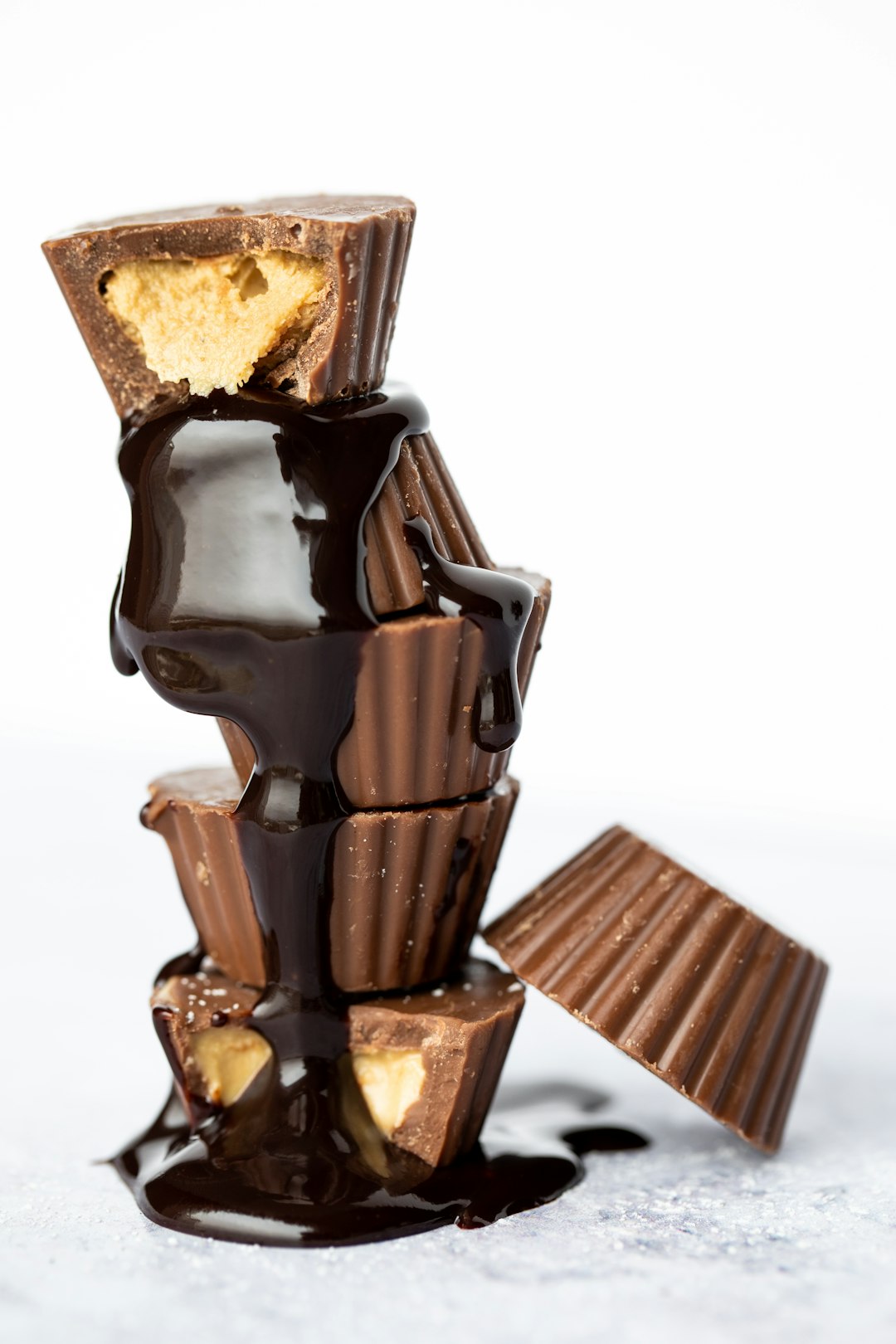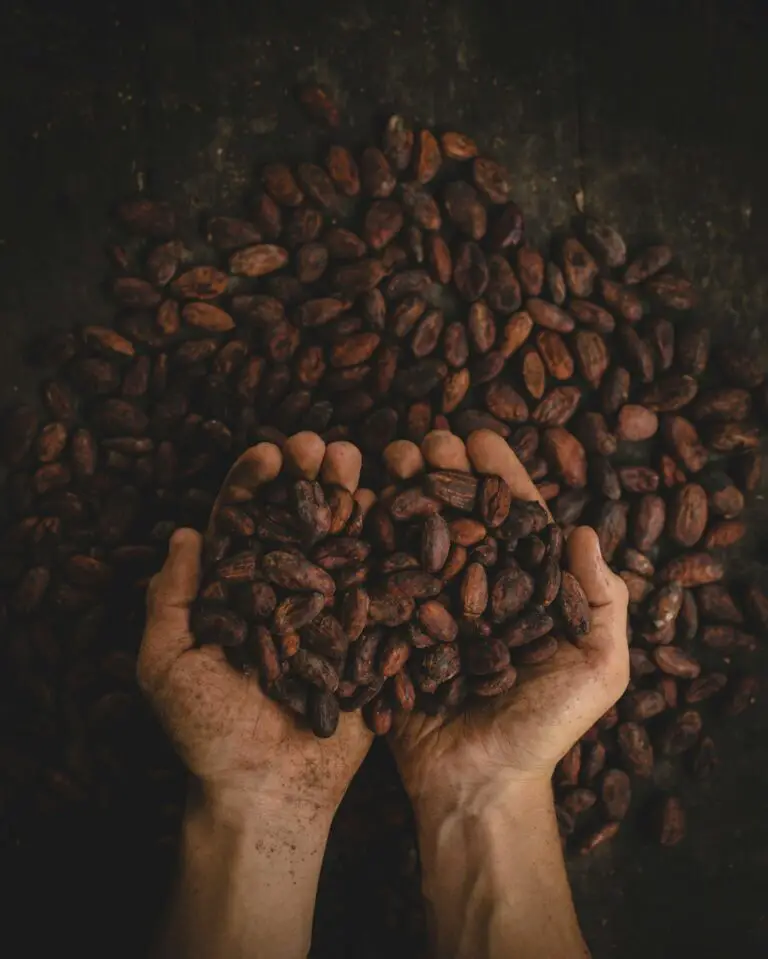Support our educational content for free when you purchase through links on our site. Learn more
Top 10 Countries That Eat the Most Chocolate Per Person 🍫 (2025)
Did you know that some countries devour nearly 10 kilograms of chocolate per person every year? That’s like unwrapping a small chocolate bar every single day! But which nation truly takes the crown for the most chocolate consumed per capita? Spoiler alert: it’s not just Switzerland, the land famous for its silky smooth chocolate. From tiny Luxembourg to chocolate-loving Germany, this sweet obsession spans borders, cultures, and centuries.
In this article, we’ll unwrap the top 10 chocolate-consuming countries, explore why some nations indulge more than others, and share insider tips from expert chocolatiers. Whether you’re a casual snacker or a hardcore chocoholic, you’ll discover fascinating facts, cultural insights, and even where to buy the most scrumptious chocolates worldwide. Ready to find out where your country ranks and what makes these chocolate hotspots so irresistible? Let’s dive in!
Key Takeaways
- Luxembourg, Germany, and Ireland lead the world in chocolate consumption per person, with averages nearing or exceeding 9 kg annually.
- Switzerland remains a chocolate powerhouse, thanks to its rich heritage and world-class brands like Lindt and Toblerone.
- Cultural traditions, climate, and economic prosperity heavily influence chocolate consumption patterns globally.
- Ethical and sustainable chocolate choices are increasingly important to consumers worldwide.
- For the best chocolate experience, explore artisan brands and classic favorites like Lindt, Godiva, and Tony’s Chocolonely.
👉 Shop top chocolate brands:
- Lindt Swiss Chocolate on Amazon | Walmart | Lindt Official
- Godiva Belgian Chocolates on Amazon | Walmart | Godiva Official
- Tony’s Chocolonely Fair Trade Bars on Amazon | Tony’s Official
Table of Contents
- Quick Tips and Facts About Global Chocolate Consumption 🍫
- A Sweet History: How Chocolate Became a Worldwide Delight 🌍
- Top 10 Countries That Devour the Most Chocolate Per Capita 🍬
- Why Switzerland Reigns Supreme in Chocolate Consumption 🇨🇭
- The UK’s Chocolate Appetite: How Much Do Brits Really Eat? 🇬🇧
- Cultural Cravings: Why Do Some Nations Eat More Chocolate Than Others? 🍫🌐
- Chocolate Buying Guide: Where to Find the Most Scrumptious Treats Near You 🛒
- Inside Scoop: Expert Chocolatiers Share Their Sweet Secrets 🍫👩🍳
- Health and Happiness: The Impact of Chocolate Consumption on Well-being ❤️
- Economic Sweetness: How Chocolate Consumption Influences Global Markets 💰
- Sustainability in Chocolate: Are Our Cravings Eco-Friendly? 🌱
- Final Thoughts on Which Country Eats the Most Chocolate Per Capita 🍫🏆
- Leave a Comment: Share Your Chocolate Cravings and Thoughts! 💬
- Conclusion: Wrapping Up Our Chocolate Journey 🎁
- Recommended Links for Chocolate Lovers and Curious Minds 🔗
- FAQ: Your Burning Questions About Chocolate Consumption Answered ❓
- Reference Links: Sources Behind Our Chocolate Insights 📚
Quick Tips and Facts About Global Chocolate Consumption 🍫
Welcome to the sweet world of chocolate consumption! Before we dive deep into which country gobbles up the most chocolate per person, let’s unwrap some quick, delicious facts to get you started:
- Switzerland is often crowned the chocolate capital, with an average consumption of around 8.8 kg per person per year (source: Whitakers Chocolates).
- Luxembourg tops some charts with an even higher per capita intake of 9.9 kg/year (about 27.15g daily) thanks to its artisan chocolatiers like Namur and Oberweis (World Population Review).
- The United States leads in total chocolate consumption but clocks in at a modest 1.1 kg per person annually due to its large population.
- European countries dominate the chocolate-loving leaderboard, with Germany, Ireland, Norway, and Belgium all consuming over 6.5 kg per capita yearly.
- Cold climates often correlate with higher chocolate consumption — maybe because chocolate is the ultimate cozy comfort food! ❄️
- Chocolate’s mood-boosting chemicals like theobromine and phenylethylamine make it a global favorite for stress relief and happiness (Hill Country Chocolate).
If you want to explore the health perks of this sweet indulgence, check out our Chocolate Health Benefits section for some surprising longevity studies!
A Sweet History: How Chocolate Became a Worldwide Delight 🌍

From Ancient Beans to Global Obsession
Chocolate’s journey from a bitter Mesoamerican beverage to a beloved global treat is nothing short of magical. The ancient Mayans and Aztecs revered cacao as the “food of the gods,” consuming it as a frothy, spiced drink. Fast forward to the 16th century, when European explorers introduced cacao to the Old World, sparking a chocolate revolution.
Key Milestones in Chocolate History
- 19th Century Innovations: Swiss pioneers like Daniel Peter and Rodolphe Lindt transformed chocolate by inventing milk chocolate and the conching process, making it smoother and creamier (Chocolate History and Origins).
- Industrialization: Mass production made chocolate affordable and accessible, turning it into a daily indulgence rather than a luxury.
- Cultural Integration: Chocolate became a symbol of celebration, romance, and hospitality worldwide, embedding itself in traditions and holidays.
Why This History Matters for Consumption
Understanding chocolate’s rich history helps explain why countries like Switzerland and Belgium have such deep-rooted chocolate cultures, influencing their high per capita consumption. It’s not just about taste — it’s about heritage, pride, and identity.
Top 10 Countries That Devour the Most Chocolate Per Capita 🍬
Ready for the ultimate chocolate leaderboard? Here’s our detailed ranking based on the latest data from multiple sources, showcasing those nations that truly live for chocolate:
| Rank | Country | Kg of Chocolate Per Person Per Year | Daily Grams | Notable Chocolate Brands/Traditions |
|---|---|---|---|---|
| 1 | Luxembourg | 9.9 | 27.15 | Namur, Oberweis (artisan chocolatiers) |
| 2 | Germany | 11.9 | 32.6 | Ritter Sport, Törtchen Törtchen |
| 3 | Ireland | 9.8 | 26.8 | Cadbury (popular in Ireland), local chocolatiers |
| 4 | Switzerland | 8.8 | 24.1 | Lindt, Toblerone, Cailler |
| 5 | United Kingdom | 8.2 | 22.5 | Cadbury, Green & Black’s |
| 6 | Norway | 8.0 | 21.9 | Freia, Nidar |
| 7 | Sweden | 7.9 | 21.6 | Marabou, Cloetta |
| 8 | Denmark | 7.5 | 20.5 | Anthon Berg, Summerbird |
| 9 | Netherlands | 7.4 | 20.3 | Droste, Tony’s Chocolonely |
| 10 | Belgium | 6.8 | 18.6 | Godiva, Neuhaus, Leonidas |
Note: Rankings vary slightly depending on the source, but the European dominance is undeniable.
Why These Countries?
- Cultural significance: Chocolate is part of daily life and celebrations.
- Economic factors: Higher disposable incomes allow for more indulgence.
- Climate: Cooler weather encourages cozy treats.
- Heritage: Longstanding chocolate-making traditions boost local pride and consumption.
Curious about how these factors play out in specific countries? Keep reading!
Why Switzerland Reigns Supreme in Chocolate Consumption 🇨🇭
The Swiss Chocolate Phenomenon
Switzerland’s reputation as the chocolate capital is well-earned. With an average of 8.8 kg per person annually, the Swiss don’t just eat chocolate — they live it. But what makes Switzerland so special?
Key Reasons for Swiss Chocolate Love
- Heritage & Innovation: Home to the invention of milk chocolate (Daniel Peter) and the conching process (Rodolphe Lindt), Switzerland set the gold standard for smooth, creamy chocolate.
- High Quality & Variety: Swiss chocolates like Lindt, Toblerone, and Cailler offer a range of flavors and textures that keep consumers coming back for more.
- Cultural Traditions: Chocolate is integral to Swiss hospitality and gift-giving, especially during holidays like Christmas and Easter.
- Climate: The cooler Alpine climate makes chocolate a comforting treat year-round.
- Tourism & Branding: Switzerland’s image as the “home of chocolate” attracts tourists eager to sample authentic Swiss delights.
Swiss Chocolate in Our Tasting Room
At Chocolate Brands™, we’ve savored many Swiss chocolates. Lindt’s Excellence 70% Dark Chocolate bar, for example, scores a solid 9/10 for its silky texture and balanced bitterness — a perfect example of why Swiss chocolate is so beloved.
The UK’s Chocolate Appetite: How Much Do Brits Really Eat? 🇬🇧
British Chocolate Cravings Unwrapped
The UK clocks in at about 8.2 kg per person per year, making it one of Europe’s top chocolate consumers. That’s roughly 22.5 grams per day — enough to enjoy a small chocolate bar daily without guilt!
What Drives UK Chocolate Consumption?
- Iconic Brands: Cadbury, Green & Black’s, and Thorntons dominate supermarket shelves and hearts alike.
- Cultural Moments: Chocolate is a staple in celebrations like Easter egg hunts and Christmas stockings.
- Variety & Innovation: From classic Dairy Milk to vegan and organic options, the UK market caters to all tastes.
- Marketing & Availability: Seasonal promotions and widespread availability keep chocolate top of mind year-round.
Fun Fact: Total UK Chocolate Consumption
With a population of about 67 million, the UK consumes approximately 536,000 tonnes of chocolate annually — that’s a LOT of sweet moments!
Cultural Cravings: Why Do Some Nations Eat More Chocolate Than Others? 🍫🌐
The Chocolate Consumption Puzzle
Why do Europeans dominate chocolate consumption while countries like India or the Philippines barely nibble on the sweet stuff? The answer is a delicious blend of culture, economy, and environment.
Factors Influencing Chocolate Consumption
- Economic Prosperity: Higher disposable incomes mean more spending on luxuries like chocolate.
- Cultural Norms: In many European countries, chocolate is a traditional gift and a daily treat.
- Climate: Cooler climates encourage consumption of rich, comforting foods.
- Availability: Countries with local chocolate production or easy imports see higher consumption.
- Health Awareness: Some countries with rising health consciousness may limit sugary treats.
- Marketing & Media: Advertising shapes cravings and consumption patterns globally.
The Contrast: Low Consumption Countries
Countries like the Philippines (0.07 kg/year) and India (0.17 kg/year) have low per capita chocolate consumption due to limited availability, cultural preferences for other sweets, and economic factors (Hill Country Chocolate).
Chocolate Buying Guide: Where to Find the Most Scrumptious Treats Near You 🛒
Navigating the Chocolate Aisle Like a Pro
Whether you’re hunting for Swiss pralines or American classics, knowing where to buy quality chocolate is half the battle.
Top Places to Buy Chocolate
- Specialty Chocolate Shops: Local chocolatiers often offer artisan, small-batch chocolates with unique flavors.
- Supermarkets: Brands like Lindt, Cadbury, and Ghirardelli are widely available.
- Online Retailers: Amazon, Walmart, and Etsy offer vast selections, including international brands.
- Farmers Markets & Food Festivals: Great for discovering local and organic chocolates.
Recommended Brands to Explore
- Swiss: Lindt, Toblerone, Cailler
- Belgian: Godiva, Neuhaus, Leonidas
- American: Ghirardelli, Hershey’s, See’s Candies
- Artisan: Vosges Haut-Chocolat, Mast Brothers
👉 CHECK PRICE on:
- Lindt Swiss Chocolate: Amazon | Walmart | Lindt Official Website
- Godiva Belgian Chocolates: Amazon | Walmart | Godiva Official Website
Inside Scoop: Expert Chocolatiers Share Their Sweet Secrets 🍫👩🍳
What Makes Chocolate Truly Exceptional?
We chatted with master chocolatiers who revealed the magic behind irresistible chocolate:
- Quality Ingredients: The best chocolates start with premium cocoa beans, often single-origin for unique flavor profiles.
- Craftsmanship: Techniques like conching and tempering are crucial for smooth texture and glossy finish.
- Balance: Perfect harmony between cocoa, sugar, milk, and sometimes nuts or fruit.
- Innovation: Modern chocolatiers experiment with spices, salts, and even savory elements to surprise the palate.
Anecdote from Our Tasting Panel
One of our tasters swears by Belgian pralines for their “melting velvet texture” and “complex flavor layers.” Another prefers dark Swiss chocolate for its “rich bitterness that lingers just right.”
Tips for Tasting Chocolate Like a Pro
- Smell before you taste — aroma reveals much about quality.
- Let it melt slowly on your tongue to savor all flavor notes.
- Pair with wine, coffee, or cheese for a gourmet experience.
Health and Happiness: The Impact of Chocolate Consumption on Well-being ❤️
Chocolate’s Sweet Health Perks
Chocolate isn’t just a guilty pleasure — it can be a health booster too! Dark chocolate, rich in antioxidants and flavonoids, has been linked to:
- Improved heart health and circulation
- Reduced inflammation
- Enhanced cognitive function and mood (Chocolate Health Benefits)
Moderation is Key
Too much sugar and fat can lead to weight gain and other health issues, so opt for dark chocolate with at least 70% cocoa for the best benefits.
Our Expert’s Take
Our tasters recommend savoring chocolate mindfully — a small square daily can satisfy cravings and support wellness without overindulgence.
Economic Sweetness: How Chocolate Consumption Influences Global Markets 💰
Chocolate’s Role in the Economy
Chocolate is a multi-billion dollar industry impacting economies worldwide:
- Production: Countries like Ivory Coast and Ghana supply over 60% of the world’s cocoa beans.
- Manufacturing: European and American companies dominate chocolate processing and branding.
- Retail: Seasonal spikes (Valentine’s Day, Easter) drive massive sales.
- Employment: Millions work in farming, processing, marketing, and retail.
Consumption Patterns Affect Markets
High per capita consumption in Europe fuels demand for premium chocolates, while emerging markets show growth potential.
Fun Fact
The global chocolate market is expected to reach over $200 billion in the next few years, driven by innovation and expanding consumer bases (Statista).
Sustainability in Chocolate: Are Our Cravings Eco-Friendly? 🌱
The Dark Side of Chocolate Production
Chocolate’s popularity comes with environmental and ethical challenges:
- Deforestation: Cocoa farming can contribute to rainforest loss.
- Child Labor: Unfortunately, some cocoa farms still rely on child labor.
- Fair Trade and Organic: Growing consumer demand for ethically sourced chocolate is pushing change.
What Can You Do?
- Look for certifications like Fair Trade, Rainforest Alliance, and Organic.
- Support brands committed to sustainable sourcing, such as Tony’s Chocolonely and Alter Eco.
- Educate yourself on the impact of your chocolate choices.
Our Recommendation
Indulge consciously! Choose chocolates that taste good and do good. For more on ethical chocolate, visit our Chocolate Brand Comparisons.
Final Thoughts on Which Country Eats the Most Chocolate Per Capita 🍫🏆
After our delicious deep dive, it’s clear that Luxembourg, Germany, Ireland, and Switzerland are the reigning champions of chocolate consumption per person. But beyond the numbers, it’s the rich histories, cultural traditions, and quality craftsmanship that make these countries true chocolate paradises.
Whether you’re a casual snacker or a connoisseur, understanding these global patterns enriches your chocolate experience. So next time you unwrap a bar, remember — you’re partaking in a worldwide love affair that spans centuries and continents.
Ready to explore more? Don’t forget to check out our expert Chocolate Bar Reviews to find your next favorite treat!
Leave a Comment: Share Your Chocolate Cravings and Thoughts! 💬
We want to hear from you! Which country’s chocolate do you crave the most? Have you tried any artisan chocolates from Luxembourg or Switzerland? Drop your sweetest stories, favorite brands, or burning questions below — let’s chat all things chocolate! 🍫👇
Recommended Links for Chocolate Lovers and Curious Minds 🔗
- Longevity Studies on Chocolate
- Chocolate Health Benefits
- Chocolate Brand Comparisons
- Chocolate Bar Reviews
- American Chocolate Brands
- Chocolate History and Origins
FAQ: Your Burning Questions About Chocolate Consumption Answered ❓

Which country eats the most chocolate per person?
Luxembourg and Germany lead with around 9.9 kg and 11.9 kg per capita annually, respectively, depending on the source.
Why do colder countries eat more chocolate?
Cooler climates encourage consumption of comforting, energy-rich foods like chocolate.
Is dark chocolate healthier than milk chocolate?
Generally, yes. Dark chocolate has higher cocoa content and antioxidants with less sugar.
Read more about “The Healthiest Dark Chocolate?🍫 15 Top Picks!”
Does chocolate consumption affect mood?
Absolutely! Chocolate contains compounds that can boost serotonin and dopamine, enhancing happiness.
Where can I find ethical chocolate brands?
Look for Fair Trade and Rainforest Alliance certifications; brands like Tony’s Chocolonely are great choices.
For more FAQs, visit our Chocolate Health Benefits page.
Reference Links: Sources Behind Our Chocolate Insights 📚
- Whitakers Chocolates Blog on Chocolate Consumption
- World Population Review: Chocolate Consumption by Country
- Hill Country Chocolate Blog
- Statista: Global Chocolate Market
- Chocolate Brands™ Internal Articles
Ready to indulge your chocolate curiosity even further? Keep exploring, tasting, and savoring — because life’s just better with chocolate! 🍫✨
Conclusion: Wrapping Up Our Chocolate Journey 🎁

After savoring the rich history, cultural nuances, and fascinating statistics behind global chocolate consumption, one thing is crystal clear: chocolate is more than just a treat — it’s a cultural phenomenon that connects people worldwide. From Luxembourg’s artisan delights to Switzerland’s silky masterpieces, the countries topping the charts have one thing in common — a deep-rooted love and respect for chocolate’s craft and comfort.
We explored why colder climates, economic prosperity, and cultural traditions drive higher chocolate consumption, and how ethical sourcing and health considerations are shaping the future of this beloved indulgence. Whether you’re a casual snacker or a serious chocoholic, understanding these factors enriches your appreciation for every bite.
If you’re curious about tasting some of the world’s finest chocolates, we confidently recommend starting with Swiss classics like Lindt or Belgian favorites such as Godiva. For those seeking ethical options, Tony’s Chocolonely offers delicious, fair-trade certified bars that satisfy both conscience and cravings.
So, next time you unwrap a chocolate bar, remember — you’re partaking in a centuries-old global love story. Keep exploring, tasting, and indulging responsibly! 🍫✨
Recommended Links for Chocolate Lovers and Curious Minds 🔗
Ready to shop or learn more? Here are some top picks and resources to satisfy your chocolate curiosity:
- Lindt Swiss Chocolate:
- Godiva Belgian Chocolates:
- Tony’s Chocolonely Fair Trade Bars:
- Books to Deepen Your Chocolate Knowledge:
- “The True History of Chocolate” by Sophie D. Coe & Michael D. Coe — Amazon Link
- “Chocolate: A Global History” by Sarah Moss — Amazon Link
- “Bean-to-Bar Chocolate: America’s Craft Chocolate Revolution” by Megan Giller — Amazon Link
Explore these to become a true chocolate connoisseur!
FAQ: Your Burning Questions About Chocolate Consumption Answered ❓
Read more about “Discover 7 Milk Chocolates Without Lead and Cadmium 🍫”
What are the top chocolate-consuming countries in the world?
The top chocolate-consuming countries per capita tend to be European nations, with Luxembourg, Germany, Ireland, Switzerland, and the United Kingdom leading the pack. Luxembourg reportedly consumes about 9.9 kg per person annually, while Germany reaches up to 11.9 kg according to some sources. These countries combine economic prosperity, rich chocolate-making traditions, and cultural affinity for chocolate, which explains their high consumption rates.
Which country has the highest per capita consumption of dark chocolate?
While overall chocolate consumption data often lumps all types together, Switzerland and Germany are known for their high-quality dark chocolate consumption. Swiss brands like Lindt produce some of the world’s finest dark chocolates, and German consumers favor dark varieties for their rich flavor and health benefits. However, exact per capita dark chocolate consumption is less frequently reported separately.
Read more about “Discover 50 Irresistible Chocolate Brands You Must Try in 2025! 🍫”
How much chocolate does the average person in Switzerland eat per year?
The average Swiss person consumes approximately 8.8 kg of chocolate annually, making Switzerland one of the world’s top chocolate consumers. This figure reflects the country’s deep chocolate heritage, innovation, and cultural integration of chocolate into daily life and celebrations.
Read more about “What is the Most Popular Brand of Chocolate? 🍫 Top 10 Revealed for 2025!”
What is the most popular type of chocolate eaten in Belgium?
Belgium is famous for its pralines and truffles, which are often milk chocolate-based with rich fillings like ganache, nuts, or caramel. Belgian chocolate is renowned for its smooth texture and high-quality ingredients. Brands like Godiva, Neuhaus, and Leonidas exemplify this tradition, making pralines a beloved favorite.
Read more about “What is considered the world’s best milk chocolate? … 🍫”
Do people in Europe eat more chocolate than people in the United States?
✅ Yes! Europeans generally consume significantly more chocolate per capita than Americans. For example, the U.S. averages about 1.1 kg per person annually, whereas many European countries exceed 7 kg per person. This difference is influenced by cultural traditions, economic factors, and the historical presence of chocolate in European diets.
What role does culture play in determining a country’s chocolate consumption habits?
Culture is a major driver of chocolate consumption. In countries like Switzerland and Belgium, chocolate is deeply embedded in social rituals, gift-giving, and celebrations, encouraging regular consumption. In contrast, countries with less historical exposure to chocolate or different sweet preferences may consume less. Marketing, media, and social norms also shape how and when people indulge.
How does the annual chocolate consumption per person vary across different regions of the world?
Chocolate consumption varies widely:
- Europe: Highest per capita consumption, often between 7-12 kg/year.
- North America: Moderate consumption; the U.S. leads in total volume but lower per capita (~1.1 kg/year).
- Asia & Africa: Generally lower per capita consumption due to economic, cultural, and availability factors.
- Oceania: Moderate consumption, with countries like Australia enjoying chocolate but at lower rates than Europe.
This variation reflects economic development, cultural preferences, and market availability.
Reference Links: Sources Behind Our Chocolate Insights 📚
- Whitakers Chocolates Blog on Chocolate Consumption
- World Population Review: Chocolate Consumption by Country
- Hill Country Chocolate Blog: Which Country Eats the Most Chocolate Per Capita?
- Statista: Global Chocolate Market
- Lindt Official Website
- Godiva Official Website
- Tony’s Chocolonely Official Website
- Chocolate Brands™ – Chocolate Health Benefits
- Chocolate Brands™ – Chocolate Brand Comparisons
- Chocolate Brands™ – Chocolate Bar Reviews
- Chocolate Brands™ – Chocolate History and Origins
Dive into these trusted sources to verify facts and deepen your chocolate knowledge!





